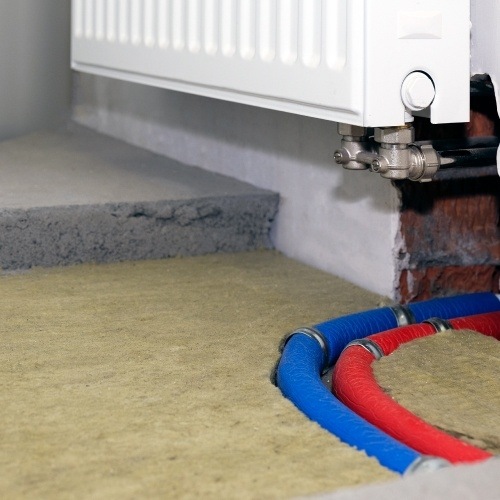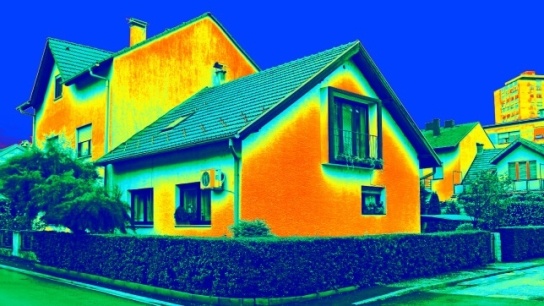A Complete Guide to Floor Insulation
Achieving a Net Zero UK means getting carbon emissions from buildings down to zero, and that includes your home. There are a number of low-cost ways of reducing your carbon emissions and saving energy and money, including floor insulation.
Floor insulation in a nutshell
Through floor insulation, you can reduce your home’s carbon emissions, increase comfort and lower your energy bills. No more cold feet when you make your morning cuppa!
So what is floor insulation and can any floor be insulated? The main sources of heat loss in homes is from wood floors and from draughts that come through gaps in between floorboards, skirting boards and around pipes - out with warm, in with cold in other words. Both wooden and concrete floors can be insulated.
Generally, you only need to add floor insulation to ground floors or floors above unheated spaces, such as a garage. You can then complement this with loft or cavity wall insulation.

The benefits of floor insulation
The benefits of floor insulation can be significant. 10-20% of heat loss from a building can be through the floors if they’re not insulated to a reasonable standard. According to the Energy Saving Trust you could save between £40-£65 on your energy bill through floor insulation. When you stack that against other savings you can make on insulating the rest of your house plus the length of time you’ll live in your home, the savings can add up.
Reduced heat loss/waste
Heat rises, so insulating your house properly means you keep more heat inside the house. Have a check around the house and see where you can feel any draughts. You can then look to eliminate them with floor insulation. Whilst doing this it’s also worth considering loft insulation so you can get rid of any draughts through the ceilings, for example from loft hatches leaking hot air into the cold roof space. The combination of cold air through the floors and hot air out of gaps in a loft hatch can lose heat very quickly. And what you lose through the floors you’ll pay for in your bill.
Save money
By correctly insulating suspended timber floors, you can save money (and for some, this could mean avoiding or alleviating fuel poverty). As you keep more heat inside your home with floor (and roof) insulation, you’ll reduce the amount of energy you use (and, therefore, your bill) while keeping your house snug.
It’s low to no maintenance
Floor insulation is maintenance-free once installed.
It future proofs your home
Unlike newer buildings, many older houses were not fitted with floor insulation when they were first built, so by investing in floor insulation you can bring your house up to date and improve your EPC ratings.
What are my floor insulation options?
Your first question might be, do I need floor insulation? If you’re unsure you may need to seek professional advice or consult the energy saving trust . Once you’ve identified you need floor insulation, check your building regulations to make sure any work you do complies with these standards. (Either your installer will do this or you can check yourself via your local Building Control Office.)
How to insulate your floor
- Wooden floor insulation: For wooden floors (also called suspended timber floors). This will consist of raising the flooring and placing special mineral wool or rigid foam insulation between joists. You can do this yourself or get a professional in. You can then also seal gaps in your floorboards using special flexible sealant between the boards.
- For concrete floors. If your home is newer then it's is likely you have a ground floor made of concrete. Solid floors, should be less prone to heat loss than suspended floors. But you can still insulate them by laying a new layer of rigid foam insulation on top. This would usually be covered by chipboard plus your chosen floor covering. Do be aware though that by doing this you will raise the floor level.
- Top and tail: if your home has a loft it's really worth insulating. Installing loft insulation is as simple as unrolling a rug. A mineral fibre material is laid between the joists and then over the joists in your loft or roof. This thick material captures heat normally lost through the roof and stops draughts getting in.
- Exclude draughts: check the usual suspects of doors, radiator pipes, floorboards and chimneys. All of these can be sealed up/ managed effectively with special sealant available at your DIY store.
- Add carpets. If you’ve got wooden floors you can keep heat in by laying down rugs and carpets and also sealing gaps between boards.
How much will it cost?
Prices depend on whether you do it yourself or get the professionals in. It might also cost you nothing if you are eligible for the government's ECO scheme grant which is allocated to help homeowners improve their home's energy efficiency.
To find out if you qualify for free or subsidised loft insulation, call us on 0333 200 5119(1) and we'll set up a free, no-obligation assessment with one of our qualified installers, who will visit your home to check its suitability. It’s really worth doing. And if you get the green light, not only will it be free to install, but it will also save you money going forwards.
Say goodbye to draughty gaps that waste energy and cost you money. By doing so you’re not only saving energy for your house, you are doing your bit to help Britain achieve Net Zero.
Find out more about floor insulation here:
Floor insulation is just one of many ways to make your home more energy-efficient, for more advice visit energy-saving tech and tips.


